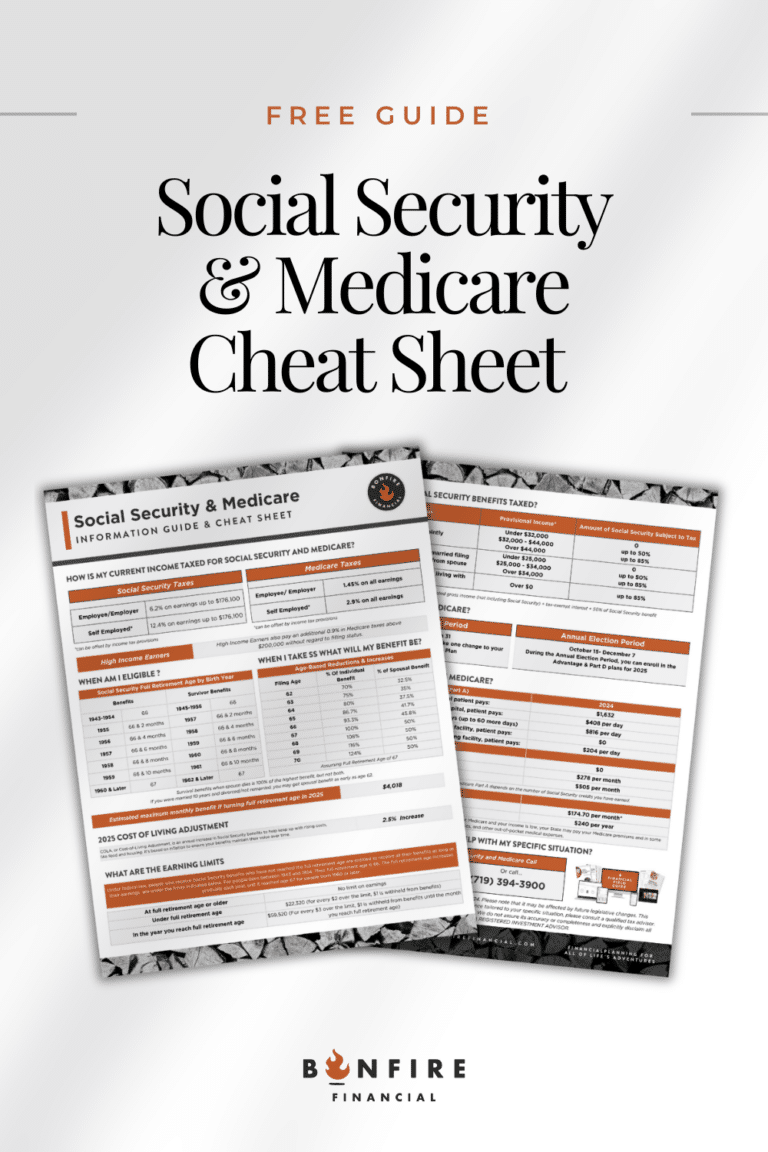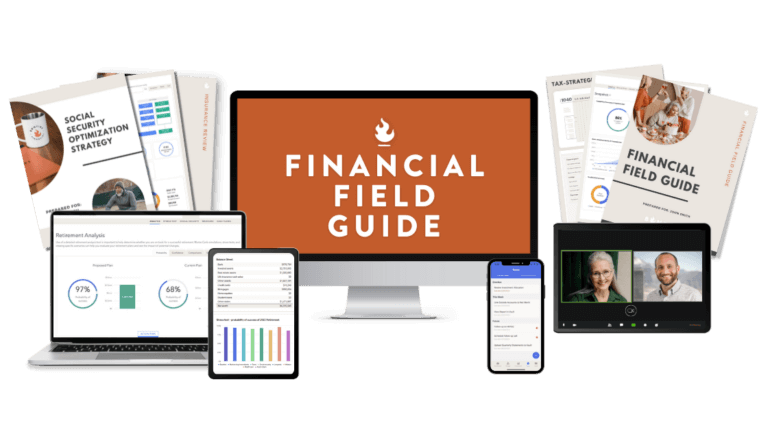Most investors think they understand risk. You win some, you lose some. Right?
Not quite.
Asymmetric risk is a smarter, more nuanced approach to investing that separates sophisticated investors from the crowd. At its core, asymmetric risk means making investments where the potential upside far outweighs the possible downside. You’re risking a small amount of capital for the chance of significant gains, without betting the farm.
Think of it as risk with a safety net. Even if things go south, the damage is minimal. If they go north? You could be looking at life-changing gains.
In our latest podcast, Brian breaks down exactly how asymmetric risk works, how much to allocate, and why it can help you grow wealth even if you’re not always right.
Listen Now: iTunes | Spotify | iHeartRadio | Amazon Music
Why Asymmetric Risk Matters for Modern Investors
Most people don’t know this, but the wealthiest investors rarely risk large portions of their portfolios on uncertain outcomes. Instead, they carve out a small slice for asymmetric opportunities, places where a small bet could deliver an outsized return. This strategy allows them to participate in high-reward opportunities without jeopardizing their overall financial stability. Even if several of these bets don’t pay off, a single big winner can more than compensate for the losses, driving significant portfolio growth over time.
Here’s why it works:
-
Small, calculated risks can drive portfolio growth without threatening financial security.
-
Losses are capped, gains are theoretically unlimited.
-
It protects your long-term goals while still allowing for meaningful upside.
The average investor often flips this equation, risking too much chasing quick wins or being too conservative and missing out entirely. They either over-leverage themselves in hopes of striking it rich overnight or let fear drive their decisions, parking money in low-return assets that can’t outpace inflation. Both approaches ignore the power of asymmetric risk.
Real-World Examples of Asymmetric Risk
Let’s put some real-world context behind the theory:
| Investment Type | Asymmetric Risk Potential |
|---|---|
| Crypto (Bitcoin, Ethereum) | Small buy-ins with potential for exponential returns. |
| Stock Options | Low-cost options can lead to large payoffs. |
| Private Equity / Startups | Modest stakes in early-stage companies with unicorn potential. |
| Real Estate Deals | Small investments in properties with big appreciation upside. |
| Individual Stocks | Early buys in disruptors like Nvidia or Tesla years before they became giants. |
Of course, none of these are recommendations, just illustrations of how asymmetric risk plays out in real portfolios.
How Much Should You Allocate to Asymmetric Risk?
There’s no universal number. Your risk tolerance, goals, and time horizon all come into play.
Here’s a general framework Brian shares with clients:
| Investor Profile | Suggested Allocation |
|---|---|
| Very Conservative | 1% to 5% |
| Balanced | 5% to 10% |
| Aggressive | 10% to 20% |
Key rule: Never risk more than you’re willing to lose completely.
As your wealth grows, the dollar amounts grow, but the percentage should align with your risk comfort and life stage. What feels like a small, manageable risk at one point in your life might feel too aggressive at another, or vice versa. Younger investors often allocate a higher percentage to asymmetric opportunities, while those approaching or in retirement typically reduce their exposure to preserve capital and minimize volatility. The key is to regularly reassess both your financial situation and your comfort with risk as they evolve.
The 3 Factors That Should Guide Your Asymmetric Risk Strategy
1. Your Goals (The Science)
Know exactly what you’re aiming for. Retirement income? A legacy for your kids? Dream travel? Quantify it. This shapes how much risk you can afford to take.
2. Your Time Horizon (The Math)
The longer you have, the more room there is to weather volatility and let asymmetric bets play out.
3. Your Risk Tolerance (The Art)
This isn’t a number on a quiz. It’s how you actually feel when markets swing or when an investment turns south. Risk tolerance varies wildly even among people with identical finances. Two investors with the same portfolio size and income might react very differently to the same market event, one seeing it as a buying opportunity, the other feeling panic. Personal experiences, past losses or gains, and even personality traits all influence how much risk feels acceptable. That’s why understanding your true tolerance isn’t just about numbers; it’s about knowing your emotional response to uncertainty.
Why Most Risk Tolerance Quizzes Fail
Most online risk assessments fall short because they treat risk as a logical decision, not an emotional experience.
People say they’re fine with volatility until they see a $100,000 loss in black and white. Brian’s clients often express this clearly:
-
“When I gain, I think in percentages.”
-
“When I lose, I feel it in dollars.”
Your emotional reaction to loss is what defines your true risk tolerance, not what you check off in an online quiz.
Why does understanding your risk tolerance matter so much? Because it directly influences how much of your portfolio you can confidently allocate to asymmetric opportunities. As your financial situation evolves, so should your approach to risk.
Investors who grasp their true risk tolerance are better equipped to take advantage of asymmetric risk. They adjust their exposure as their wealth grows without stepping outside their comfort zone or compromising long-term goals.
How Asymmetric Risk Changes As You Grow Wealth
As your assets increase, you can scale up your asymmetric risk investments without increasing your portfolio percentage.
Example:
-
$1 million portfolio → $50,000 (5%) into asymmetric risk.
-
$2 million portfolio → $100,000 (5%) same percentage.
Even though the percentage stays the same, your opportunity to capture major gains grows. A 5% allocation in a larger portfolio means more capital is working for you in asymmetric opportunities, increasing the potential dollar amount of any upside.
This allows your wealth-building strategy to scale without requiring you to take on proportionally more risk. Over time, as winners emerge from these calculated bets. They can meaningfully boost your portfolio’s overall growth, even if only a few outperform while others fall short.
Why Asymmetric Risk Should Shrink (But Not Disappear) Near Retirement
In early and mid-career, it makes sense to allocate more to asymmetric opportunities. You have time to recover from losses and let winners compound.
As you near retirement:
-
Consider dialing back the percentage.
-
Rebalance your portfolio regularly.
-
Still keep a slice dedicated to growth to offset inflation.
However, even retirees shouldn’t avoid asymmetric risk entirely. It can provide a growth engine to help keep up with rising living costs and unexpected expenses. While the proportion allocated to asymmetric opportunities may decrease in retirement, maintaining some exposure allows your portfolio to continue growing beyond conservative income-generating assets like bonds or CDs.
This growth potential becomes especially important in protecting against inflation and ensuring your assets can support a long retirement.
That said, it’s crucial to adjust your asymmetric risk allocation thoughtfully as you approach and move through retirement. Even with the best intentions, investors often stumble when it comes to executing this strategy effectively. That is why it is important to rebalance your portfolio.
Common Mistakes Investors Make With Asymmetric Risk
Successfully incorporating asymmetric risk into a portfolio requires discipline, patience, and an honest understanding of your personal risk tolerance. Unfortunately, even savvy investors can fall into these common traps:
- Overconcentration
Going all-in on one “big bet.” Early success can breed overconfidence, tempting investors to allocate too much capital to a single opportunity. While it’s natural to want to increase exposure to a winning strategy, overconcentration defeats the purpose of asymmetric risk, which is to limit downside exposure. - Chasing Past Winners
It’s easy to fall into the habit of adding to investments that have already skyrocketed. But true asymmetric opportunities are usually found early, before widespread adoption or mainstream success. Chasing past winners often leads to buying in at elevated valuations, reducing the potential upside and increasing downside risk. - Ignoring Liquidity
Many asymmetric plays, such as private equity, venture capital, or certain real estate deals, can tie up your funds for years. Failing to consider liquidity needs can create cash flow problems or force you to exit positions prematurely, often at a loss. - Neglecting Professional Guidance
The allure of asymmetric risk can lead some investors to go it alone, especially with the rise of online investing platforms and market forums. However, without a deep understanding of the risks and how these investments fit into your overall financial strategy, DIY approaches can quickly backfire. A CERTIFIED FINANCIAL PLANNER™ can help vet opportunities, manage risk exposure, and ensure that asymmetric bets align with your long-term goals.
How to Identify a Smart Asymmetric Risk Opportunity
Avoiding these common mistakes is just the first step. To make the most of asymmetric risk, you also need to know how to spot the right opportunities and filter out the wrong ones.
Not every opportunity with big potential qualifies as a smart asymmetric risk. Before investing, ask yourself these critical questions:
What’s the maximum I could lose?
Always define the worst-case scenario upfront.
What’s the realistic upside?
Be honest. Is the potential return worth the risk, or are you being overly optimistic?
How does this fit into my overall portfolio?
Asymmetric bets should complement, not dominate, your portfolio.
Will losing this money derail my goals?
If the answer is yes, it’s not the right asymmetric play.
How liquid is the investment?
Can you easily exit if needed, or will your capital be locked up?
What’s the track record of similar investments?
While past performance doesn’t guarantee future results, it can offer valuable context.
Beyond the checklist:
Smart asymmetric investing also means understanding the timing and context of an opportunity. Markets are dynamic. What looked like a great bet six months ago might not hold the same potential today.
Asymmetric Risk vs. Asymmetric Opportunity: Know the Difference
It’s important to distinguish between asymmetric risk and asymmetric opportunity.
-
Asymmetric risk focuses on the structure of a specific investment, the balance between potential loss and potential gain.
-
Asymmetric opportunity refers to the broader environment, favorable market timing, disruptive trends, regulatory changes, or macroeconomic shifts that can magnify the potential of an investment.
Successful investors look for asymmetric opportunities where asymmetric risk structures already exist. It’s not just about finding a great idea; it’s about finding the right idea at the right time, with the right risk-to-reward balance.
Asymmetric Risk and Behavioral Finance: The Hidden Challenge
Understanding asymmetric risk intellectually is easy. Applying it emotionally is hard.
Why?
Because humans are naturally wired to avoid loss. In fact, studies in behavioral finance have shown that losses feel about twice as painful as equivalent gains feel rewarding, a phenomenon known as loss aversion.
This emotional response can lead even the most rational investors to make poor decisions. When faced with real dollar losses, it becomes difficult to stay objective. Investors might:
-
Pull out of investments too early at the first sign of trouble.
-
Double down on losing positions out of a desire to “get even.”
-
Avoid taking new opportunities entirely after experiencing a loss.
This is where asymmetric risk presents a unique challenge. While the strategy is built to absorb small losses in pursuit of larger wins, emotionally accepting those losses, even when they’re expected and planned for, can be uncomfortable.
That’s why working with a trusted advisor can be a game-changer.
A good advisor (like us *wink*) does more than just recommend investments. They help:
-
Keep your emotions in check during both market highs and lows.
-
Align asymmetric bets with your broader financial plan, so no single setback derails your progress.
-
Provide access to vetted asymmetric opportunities that fit your goals and risk tolerance.
-
Reassess and rebalance as your financial situation evolves.
Ultimately, while asymmetric risk offers a powerful way to pursue growth, the ability to stick with the strategy often determines success more than the strategy itself.
Why Asymmetric Risk Isn’t Just for the Wealthy
While high-net-worth individuals use this strategy often, any investor can apply it at the right scale.
It’s not about chasing moonshots or gambling. It’s about creating a portfolio that can:
-
Absorb small losses.
By allocating only a small percentage to higher-risk opportunities, even multiple losses won’t significantly impact your overall wealth. -
Capitalize on big wins.
When an asymmetric bet pays off, the gains can be substantial enough to offset many smaller losses — and then some. -
Build wealth responsibly over time.
This approach lets you participate in growth without putting your financial security at risk.
Asymmetric risk levels the playing field. Whether you’re investing $5,000 or $500,000, the principle remains the same: focus on opportunities where the reward dramatically outweighs the risk. And as Brian often reminds clients, success in investing isn’t about being right all the time, it’s about structuring your portfolio so that when you are right, it counts in a big way.
Key Takeaways
-
Asymmetric risk means risking a small, affordable amount for the chance at a large gain.
-
It’s a powerful tool for portfolio growth without jeopardizing financial stability.
-
Your allocation should reflect your goals, time horizon, and personal risk tolerance.
-
Mistakes happen when investors overcommit or fail to rebalance.
-
Professional advice helps navigate the emotional and strategic challenges of asymmetric investing.
Next Steps
If your advisor isn’t talking to you about asymmetric risk, they should be.
At Bonfire Financial, we specialize in helping clients use asymmetric risk intelligently, not as a get-rich-quick scheme, but as a thoughtful, disciplined growth strategy.
Ready to explore asymmetric risk opportunities tailored to your goals? Schedule a call with us!
 Client Login
Client Login







